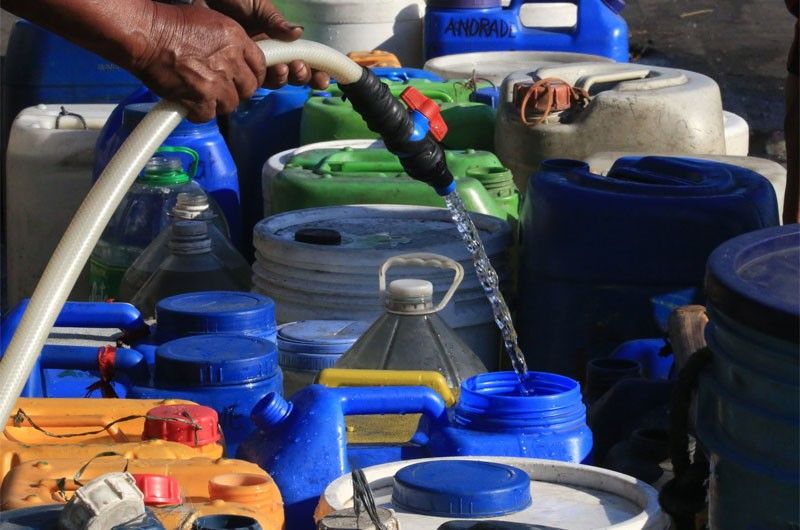Maynilad sets daily water service interruptions

MANILA, Philippines — Customers of Maynilad Water Services Inc. will experience daily water service interruptions starting today as a measure to conserve water with the El Niño phenomenon projected in the second half of the year.
On its official Twitter account, Maynilad said it will implement daily water service interruptions in parts of its concession area starting March 28.
Maynilad said it has also placed mobile water tankers on standby to deliver potable water to customers.
Maynilad announced the complete list of affected areas and their corresponding service interruption schedules on its website, Facebook Page and Twitter account.
“These daily service interruptions will last depending on the actual raw water volume that our treatment plants will receive, as well as on actual rainfall that will occur at the watersheds,” it said.
As the largest private water concessionaire in the Philippines in terms of customer base, its concession area covers parts of Manila, Quezon City, Makati, Caloocan, Pasay, Parañaque, Las Piñas, Muntinlupa, Valenzuela, Navotas and Malabon; the cities of Cavite, Bacoor and Imus and the towns of Kawit, Noveleta and Rosario in Cavite.
Last week, the Philippine Atmospheric, Geophysical and Astronomical Services Administration (PAGASA) issued an El Niño Watch, which is implemented when conditions are favorable for the development of the weather phenomenon within the next six months and probability is above 55 percent.
Maynilad said the elevation at Angat Dam is still manageable as of mid-March. However, as warned by PAGASA, the water firm does not expect sufficient rain over the watersheds in succeeding months to replenish the dams.
In light of the water service interruptions, Maynilad urged customers to keep enough water stored for use during the hours when supply will not be available. The company also advised customers to expect some discoloration in the supply once water service resumes.
Meanwhile, Manila Water Co. Inc. said there are no scheduled water interruptions and round-the-clock supply in the east zone – which encompasses parts of Makati, Mandaluyong, Pasig, Pateros, San Juan, Taguig, Marikina, most parts of Quezon City, portions of Manila, as well as several towns in Rizal – will continue.
To keep its daily water supply, Manila Water said it is maximizing its Cardona Water Treatment Plant in Rizal that can deliver 110 million liters of water per day, operating the Marikina Portable Water Treatment Plant which can add 15-20 MLD and harnessing of groundwater through deep wells which can provide additional 100 MLD.
It has also implemented backwash recovery from its water treatment plants, which can add 20-30 MLD and utilized the Alat Reservoir that can provide 10 MLD.
Manila Water has also commissioned the Calawis Treatment Plant, which can provide at least 20 MLD and the first phase of the East Bay project for another 50 MLD.
Dam levels fall
The water level of Angat Dam and other dams have started to drop with the onset of the dry season, according to PAGASA.
Based on latest monitoring of PAGASA, as of 6 a.m. March 27, 2023, the level of Angat Dam slightly decreased to 203.62 meters compared to the 203.80 meters the day previous.
Angat Dam supplies more than 90 percent of Metro Manila’s potable water needs and provides irrigation to 25,000 hectares of farmlands in Bulacan and Pampanga.
The weather bureau said that decline in water level was also observed at La Mesa Dam, with 76.52 meters compared to 76.54 meters on Sunday; as well dams in Ambuklao (741.71 meters from 741.99 meters), Binga (573.86 meters from 573.92 meters), San Roque (242.72 meters from 243 meters) and Pantabangan (184.77 meters from 184.92 meters).
National Water and Resources Board executive director Sevillo David Jr. has urged the public to conserve water to prevent a repeat of what happened in 2019 when Angat’s water level reached as low as 116 meters after El Niño hit the country.
David said that while the present water level in Angat Dam is higher compared to the 180 meters minimum operating level, necessary preparations should be done amid the possible impact of the dry spell.
PAGASA said El Niño will likely develop in July-August-September 2023 and may persist until 2024.
El Niño increases the likelihood of below-normal rainfall conditions, which could lead to dry spells and droughts in some areas of the Philippines. – Bella Cariaso, Paolo Romero
- Latest
- Trending






























